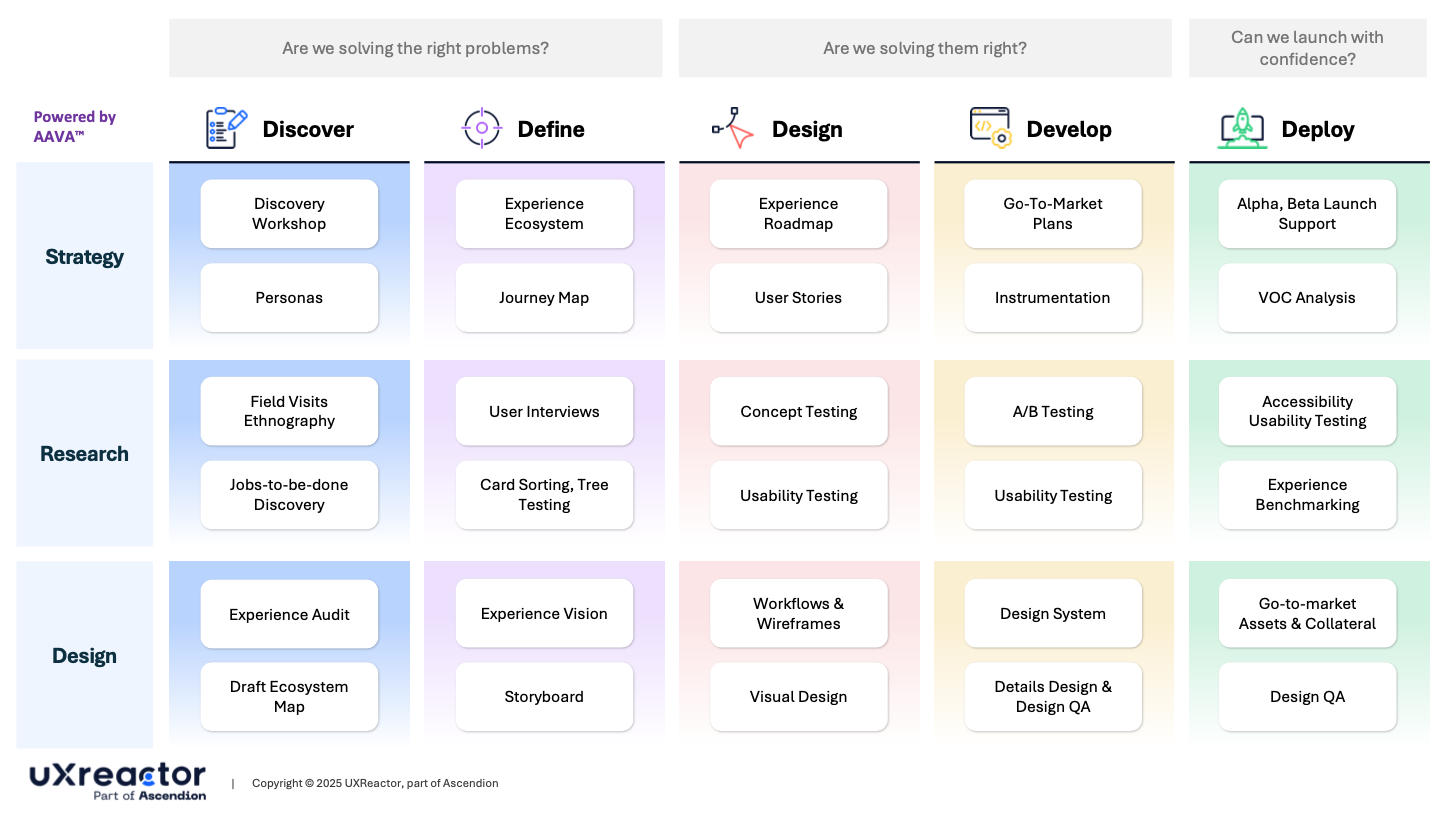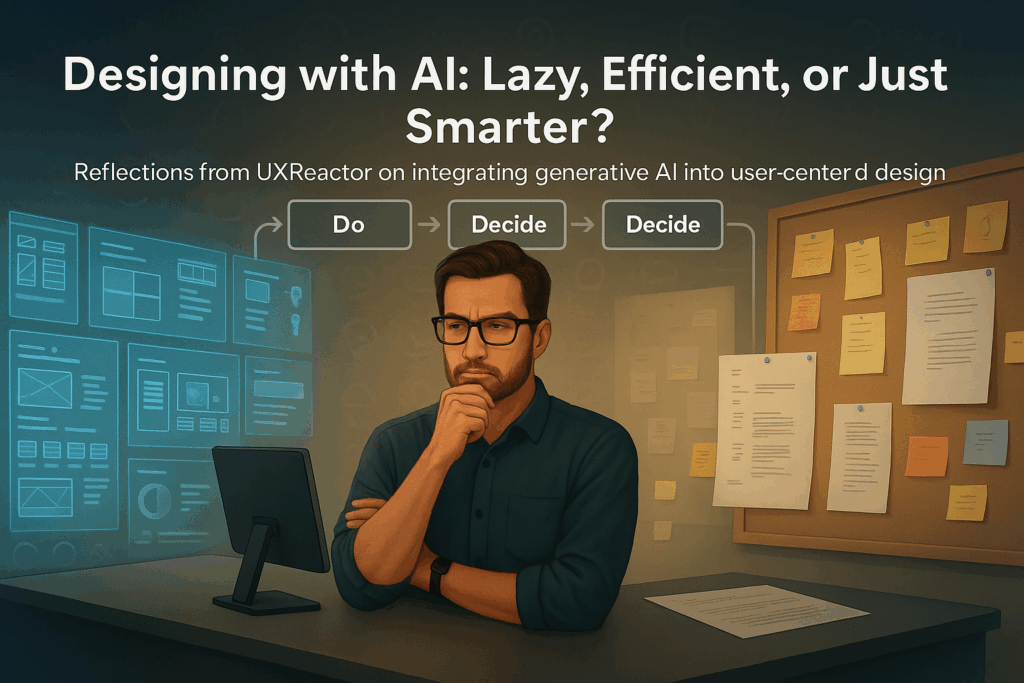Reflections from UXReactor, part of Ascendion, on integrating generative AI into user-centered design
Introduction: The Temptation of AI
AI is the hot topic of the year — possibly the decade. At UXReactor, part of Ascendion, we’ve been piloting various generative AI tools across our workflow: user research, strategy, wireframes, and even visual design. A full list of AI tools and platforms is provided below.
The promise is clear: faster iterations, endless ideation, and instant design options. But can we skip the traditional UX process and jump straight to UI? We tried. And here’s what we learned.
The Attraction of Jumping Ahead
Generative AI tools can give you three design options for a high-level concept in seconds. Ideation feels free. The dopamine hits fast. But here’s the catch: context matters.
Why Context Still Rules
Without understanding the problem space, user pain points, motivations, or current journeys, even the most beautiful UI falls flat.
AI can generate options, but it can’t tell you which one solves the right problem. That’s where primary research still matters.
Recommendation: Use AI to accelerate your research, not replace it.
- Summarize transcripts, generate themes
- Generate proto-personas
- Explore user journeys
- Create documents, conduct deep research, and write reports
But always validate with real users.
Prompt Quality = Output Quality
You get what you ask for. Poor prompts lead to poor design directions. And while AI is great at exploring options, it struggles to narrow them down.
This is where human judgment shines. Ideation is free. Choosing wisely? That’s still on us.
The Decide–Do–Decide–Do Framework
We’ve found this framework helpful:
- Decide what to explore
- Do it with AI
- Decide what to keep
- Do the next iteration
AI excels at the “Do.” But the “Decide” still requires human insight, experience, and empathy.
The 5Ds Still Matter
Discover, Define, Design, Develop, Deploy: AI speeds through all five — but doesn’t replace any. Skipping discovery or definition leads to shallow solutions. Skipping usability testing leads to surprises later.

A Personal Reflection: Lazy or Efficient?
When I started writing this article, I used Copilot to organize my thoughts — let’s call that V1. Then I switched to pen and paper to sketch the outline — V2. Back to Copilot for drafting — V3. And finally, polish and refinement — V4.
So am I lazy? Efficient? Maybe both. But I’m definitely more strategic — using AI where it helps, and leaning on human judgment where it matters.
Final Thoughts
At UXReactor, we’re embracing AI not to skip steps, but to accelerate rigor. We’re still user-centered. Still strategy-first. However, we’re now faster, more exploratory, and more empowered.
Generative AI is a powerful partner. But the best designs still come from humans who understand humans.
List of Generative AI tools we regularly use and experiment with during the entire Product Development Lifecycle for UX Strategy, User Research, and Design.
Ascendion’s AAVA(TM) Platform: https://ascendion.com/how-we-deliver/aava/
ChatGPT
Copilot
Claude
Mid Journey
Loveable.dev
Replit
Stitch (from Google)
Firebase
HeyMarvin
Schedule a call to learn more about how we use AI to be more productive. We are happy to talk.


